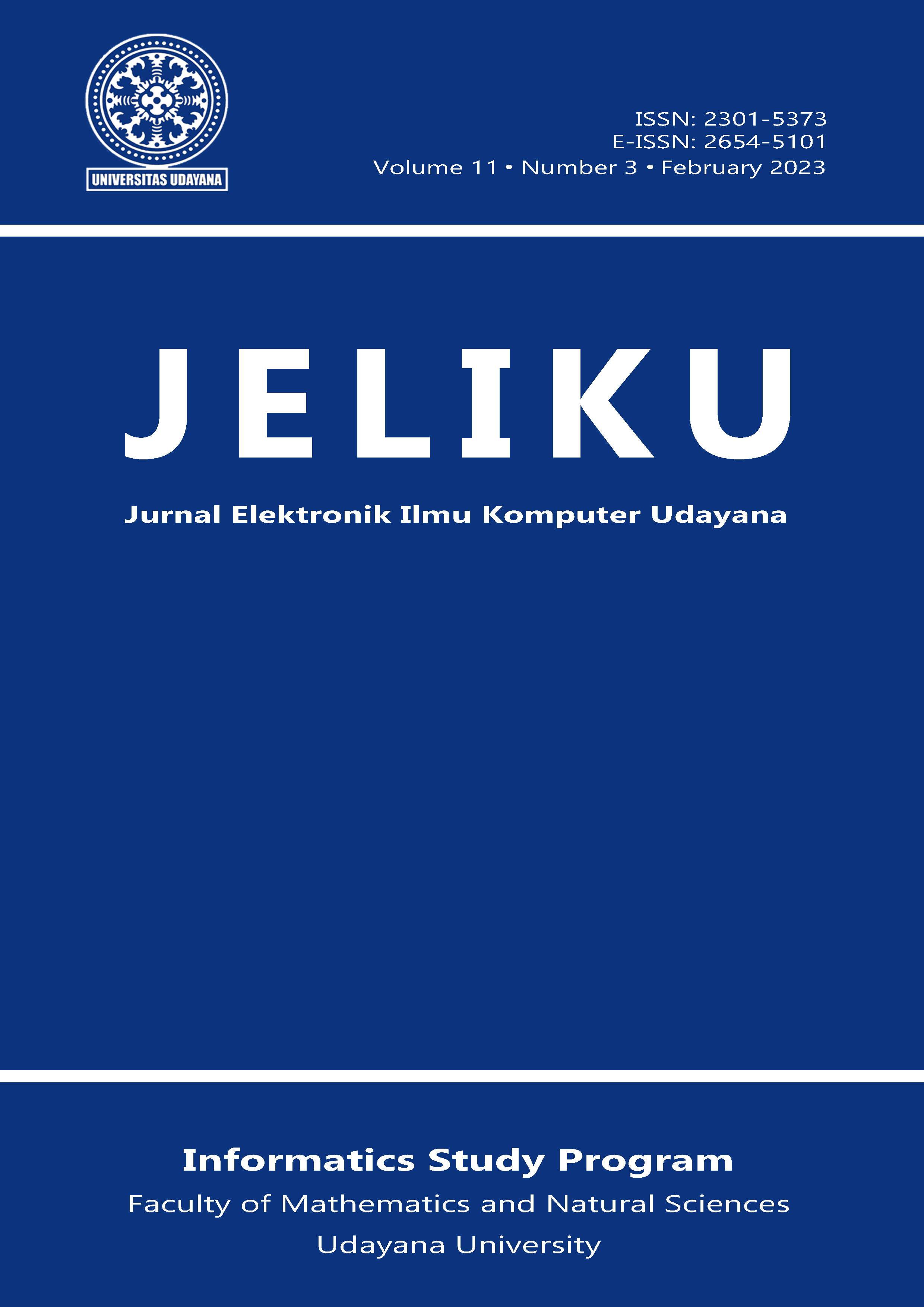Classification of Bird Sounds Using the Mel-Frequency Cepstral Coefficient (MFCC) and K-Nearest Neighbor (KNN) Methods
Abstract
With the rapid development of this technology, of course, it can provide benefits to the wider community, one of which is to provide convenience in meeting the needs of an agency or group, one of which is forest rangers and animal supervisors who can assist in classifying the types of birds or poultry, because birds have voices. which differ by type. For example, in the West Bali National Park itself, there are several types of bird species that are there, for example, the Java Dederuk bird or birds belonging to the Columbidae species. In this case technology plays an important role as a medium for information exchange regarding information about birds and can easily determine the type of bird. So, to fulfill this, we need a system that can classify bird species based on their sound. In this study, the system built uses the MFCC method for feature extraction. This method was chosen because the success rate in speech recognition using MFCC feature extraction is higher than feature extraction using FFT. And for the classification stage using the KNN method. This method was chosen because KNN is easy to represent compared to other methods. From the results of the Classification of Bird Sounds Using the Mel-Frequency Cepstral Coefficient (MFCC) and K-Nearest Neighbor (KNN) methods, it can be concluded that the resulting K-Nearest Neighbor model is able to classify bird species based on their sound properly because after a single data classification with data outside of the training data, the system is able to classify it very accurately, the accuracy percentage is 80%. And in the test results using K-fold Cross Validation, the best K value is obtained in the K-Nearest Neighbor model, namely K = 1 with 77% accuracy.






